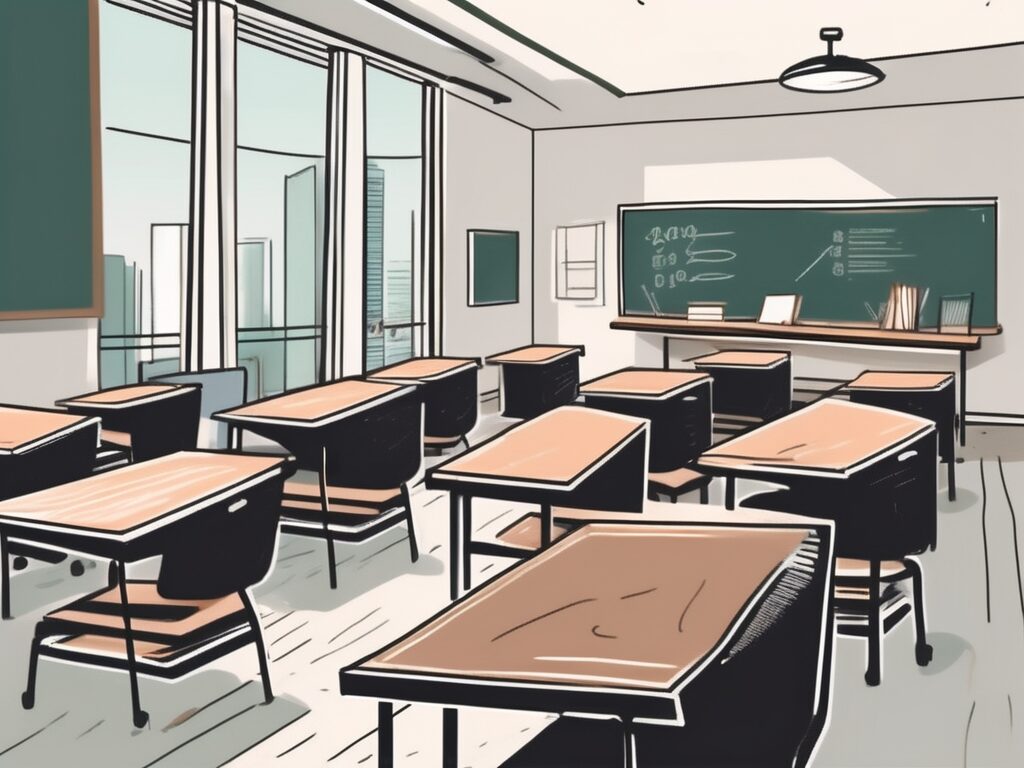Classroom management is a crucial skill for educators, particularly in the bustling, high-achieving environment of Singapore’s education system. With a Master’s in Education, you’re already a step ahead, equipped with advanced knowledge and understanding of pedagogical theories and practices. However, applying these theories in a real-world classroom setting can be a different kettle of fish. Here are six top tips to help you navigate the waters of classroom management in Singapore.
1. Establish Clear Expectations
Setting clear expectations is akin to setting the GPS before you embark on a journey. It’s about letting your students know what you expect from them in terms of behaviour, work ethic, and participation. This is not just about laying down the law; it’s about creating a shared understanding of what a successful learning environment looks like.
With your Master’s in Education, you’ll have delved into the psychology of learning and behaviour. Use this knowledge to craft expectations that are realistic, achievable, and conducive to a positive learning environment. Remember, it’s not about creating a classroom of robots; it’s about fostering a community of learners who respect and support each other.
2. Use Positive Reinforcement
Positive reinforcement is a powerful tool in your classroom management toolkit. It’s the proverbial carrot rather than the stick. By recognising and rewarding positive behaviour, you encourage its repetition. It’s a simple concept, but one that’s backed by a wealth of psychological research.
Think of positive reinforcement as the seasoning in a dish. Too little, and the dish is bland; too much, and it’s overpowering. Striking the right balance is key. Be genuine in your praise, and ensure the reinforcement is appropriate and meaningful to the student.
3. Foster a Sense of Community
A classroom is more than just a physical space; it’s a community of learners. As the educator, you’re not just the leader of this community; you’re a member too. Fostering a sense of community can make your classroom a more positive, inclusive, and productive place.
Think of your classroom as a mini-Singapore. Just as the city-state is known for its multicultural harmony and community spirit, strive to create a classroom culture that values diversity, collaboration, and mutual respect. This can be as simple as organising group activities, promoting open dialogue, or celebrating cultural events together.
4. Implement Effective Classroom Layouts
The physical layout of your classroom can have a significant impact on learning and behaviour. An effective classroom layout can facilitate interaction, minimise distractions, and promote a positive learning environment.
Think of your classroom as a stage. The way it’s set up can influence the performance of the actors (your students). Consider factors such as seating arrangements, access to resources, and visibility of instructional areas. Remember, there’s no one-size-fits-all solution; the best layout depends on your teaching style, your students’ needs, and the nature of the lessons.
5. Utilise Technology
Technology is an integral part of modern education. Used effectively, it can enhance learning, streamline administrative tasks, and facilitate communication. However, it’s important to use technology judiciously; it should support, not overshadow, your teaching.
With your Master’s in Education, you’ll likely have explored the role of technology in education. Apply this knowledge to your classroom management. Use educational apps to track behaviour, online platforms for homework assignments, or interactive whiteboards to make lessons more engaging. Remember, technology is a tool, not a teacher; it’s there to enhance your teaching, not replace it.
6. Continual Professional Development
As the saying goes, the best teachers are lifelong learners. Continual professional development (CPD) is not just about keeping up with the latest educational trends and technologies; it’s about constantly striving to improve your teaching and classroom management skills.
Consider CPD as your personal quality control. Just as businesses continually review and improve their products, educators should continually review and improve their teaching. This could involve attending workshops, reading educational journals, or seeking feedback from colleagues. Remember, every day is a school day, even for teachers.
In conclusion, classroom management is a complex, multifaceted skill. It’s about much more than discipline and control; it’s about creating a positive, productive learning environment where every student can thrive. With these six tips, and your Master’s in Education, you’re well-equipped to navigate the challenges and rewards of classroom management in Singapore.
Elevate Your Teaching Career with iQTS
Ready to transform your classroom management skills into international teaching success? Join the IQTS at UWE and embark on the International Qualified Teacher Status (iQTS) Programme. This prestigious Level 7 qualification is your gateway to not just meeting but exceeding the stringent qualification requirements of international schools. With the iQTS, you’ll not only enhance your professional development but also increase your chances of interview callbacks, accelerate your career progression with higher promotion rates, and enjoy a significant salary boost. Say goodbye to professional isolation by expanding your network and feel confident in adapting to global education systems with our comprehensive curriculum insights. Plus, our flexible online study options ensure you can balance your career advancement with your ongoing work commitments seamlessly. Make Your Next Step towards a thriving international teaching career with the IQTS at UWE.

